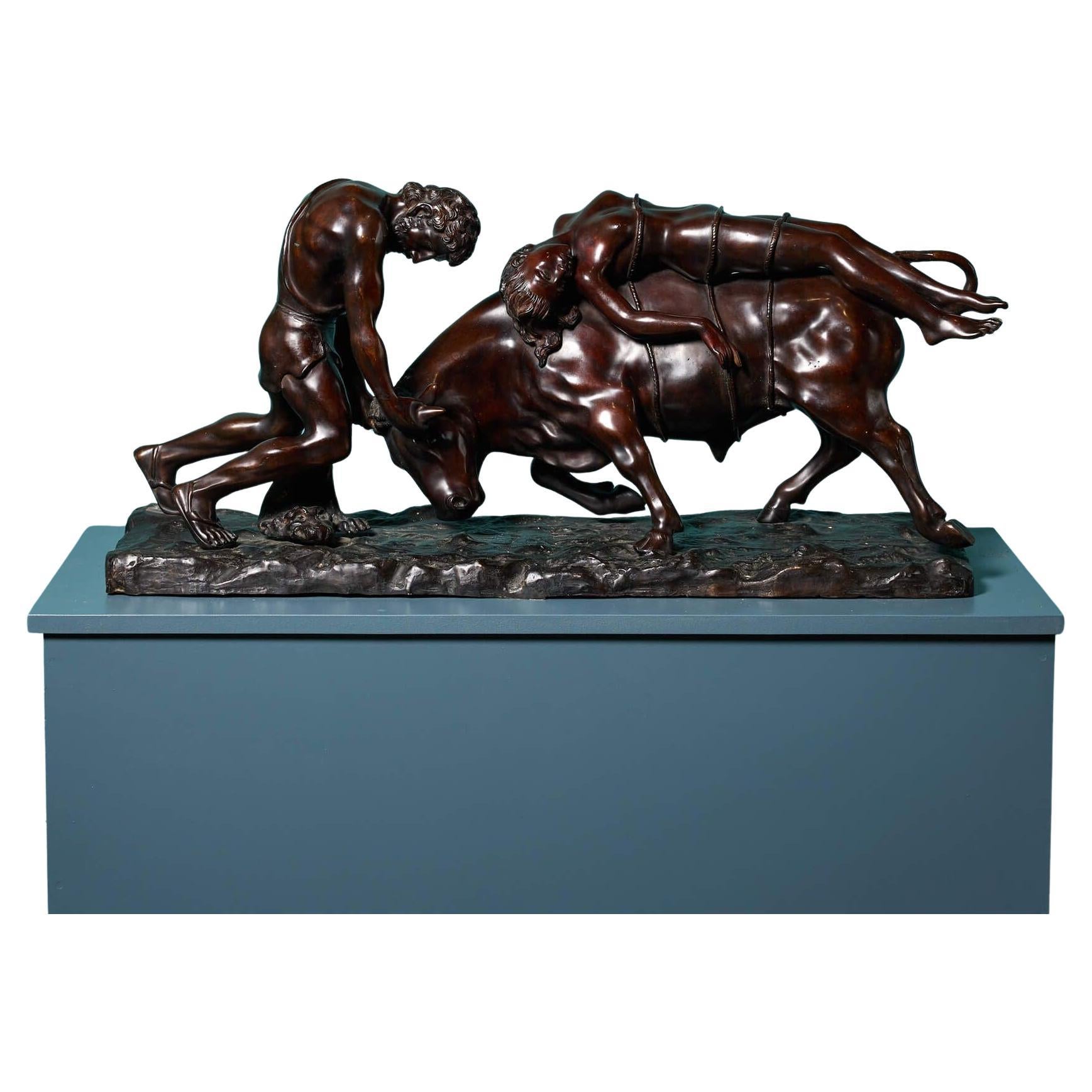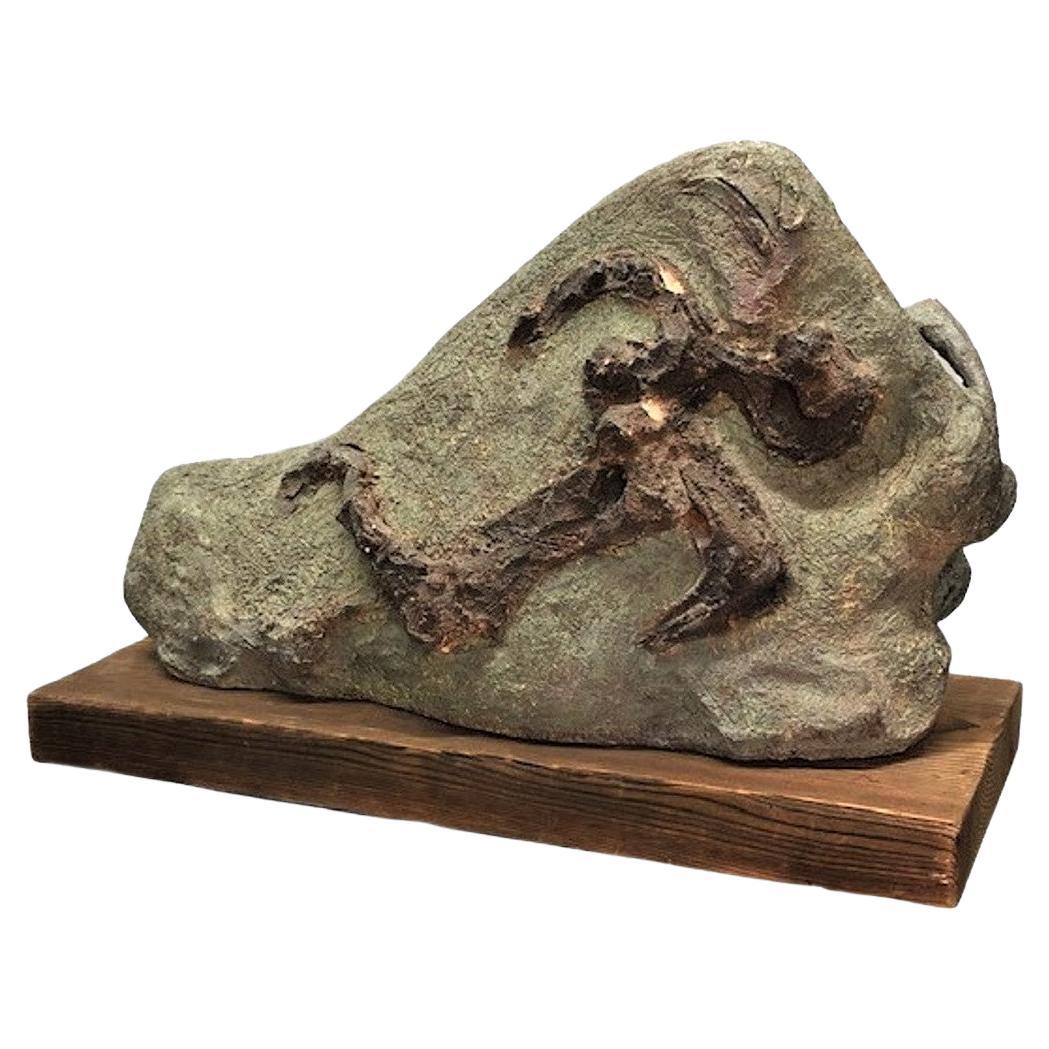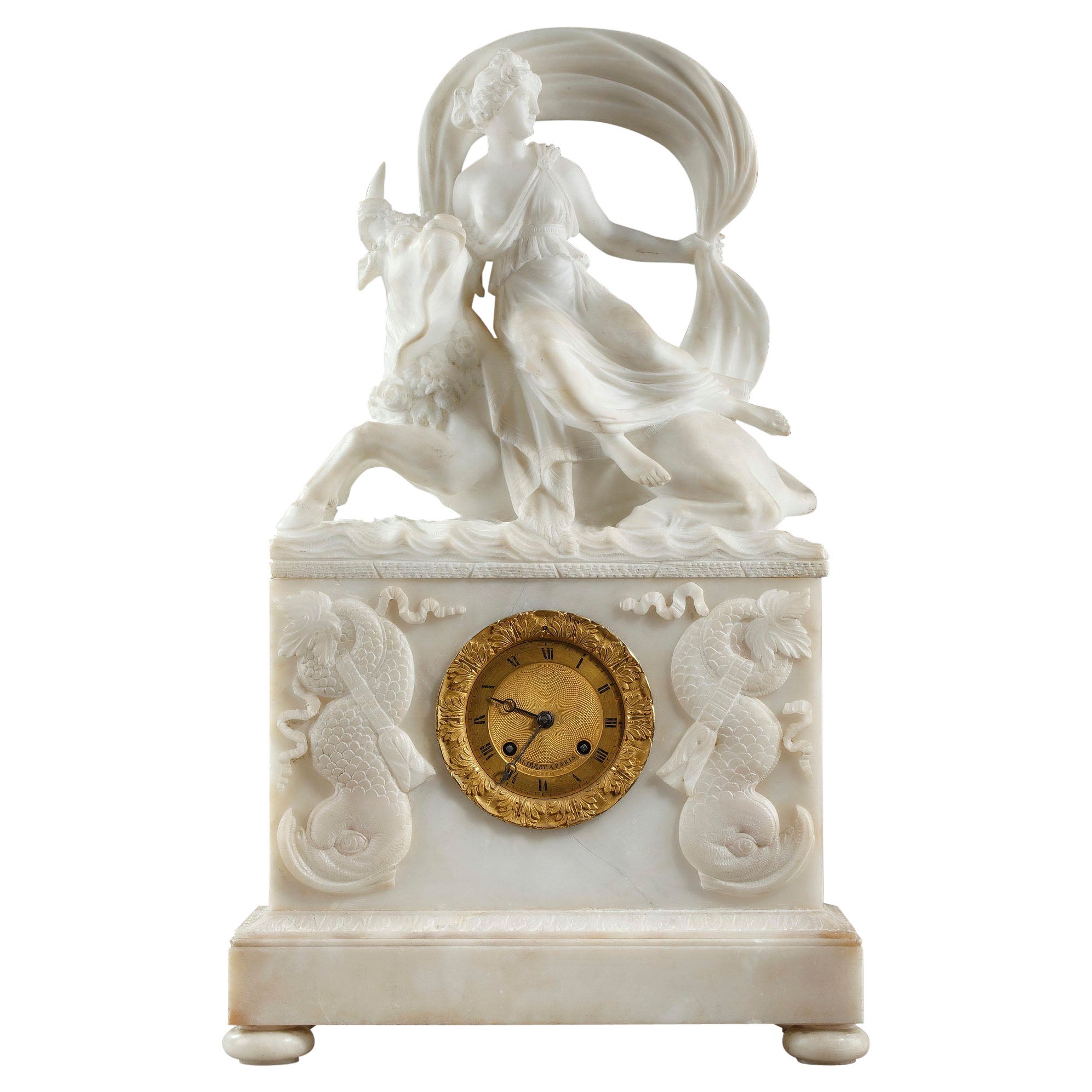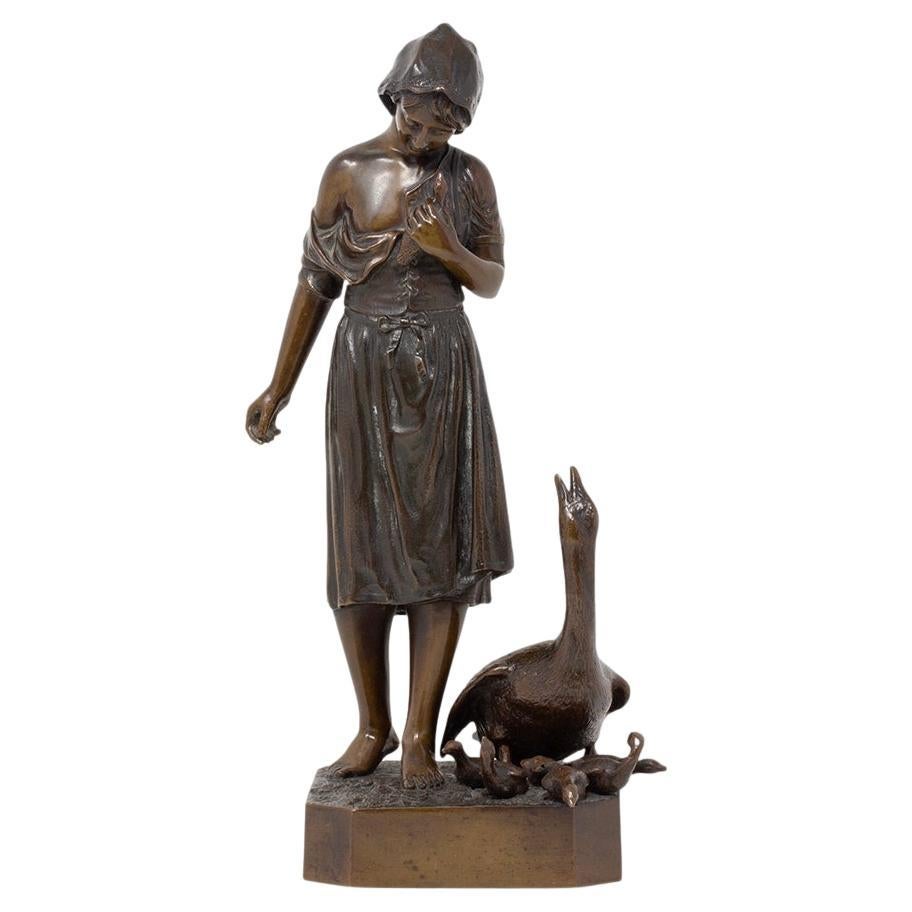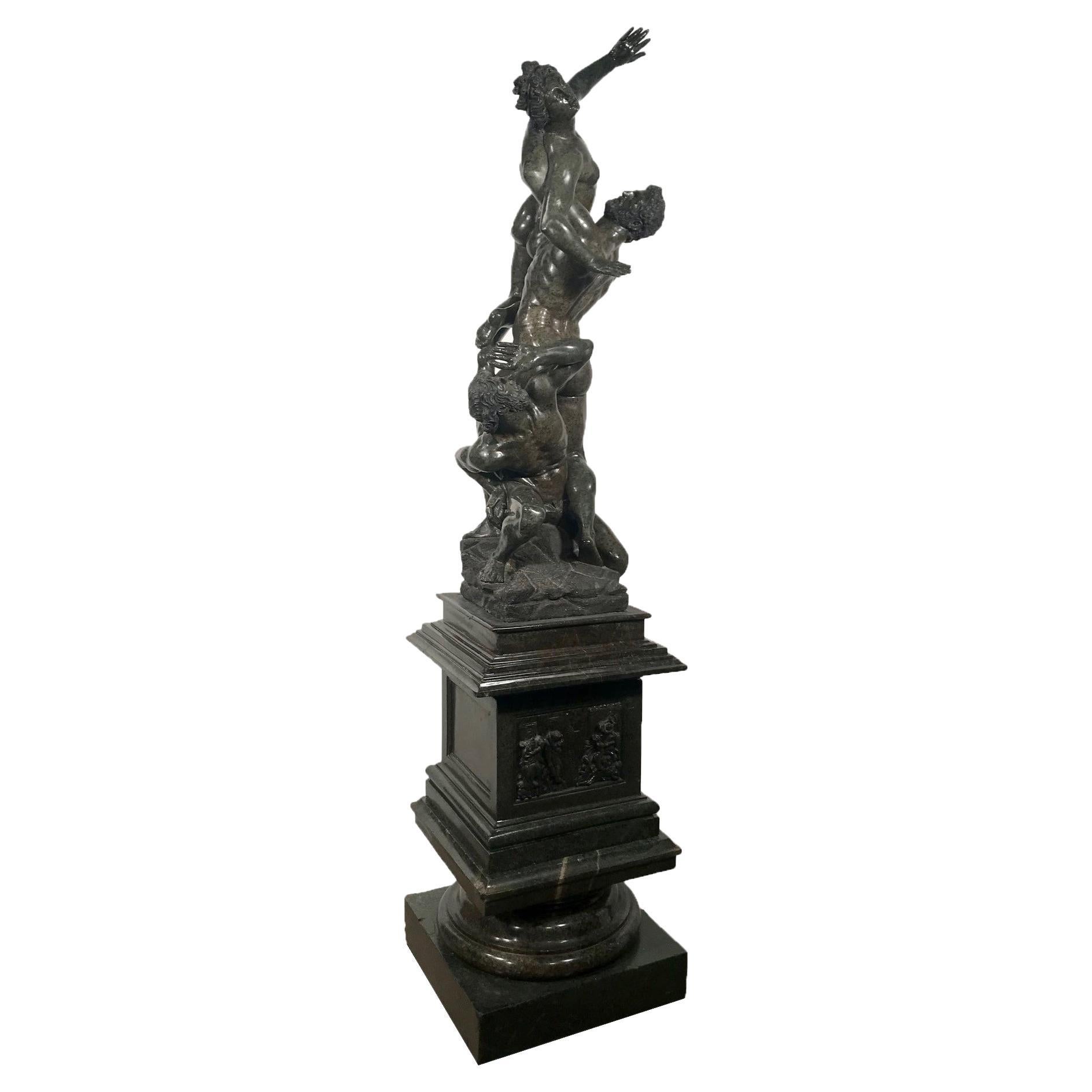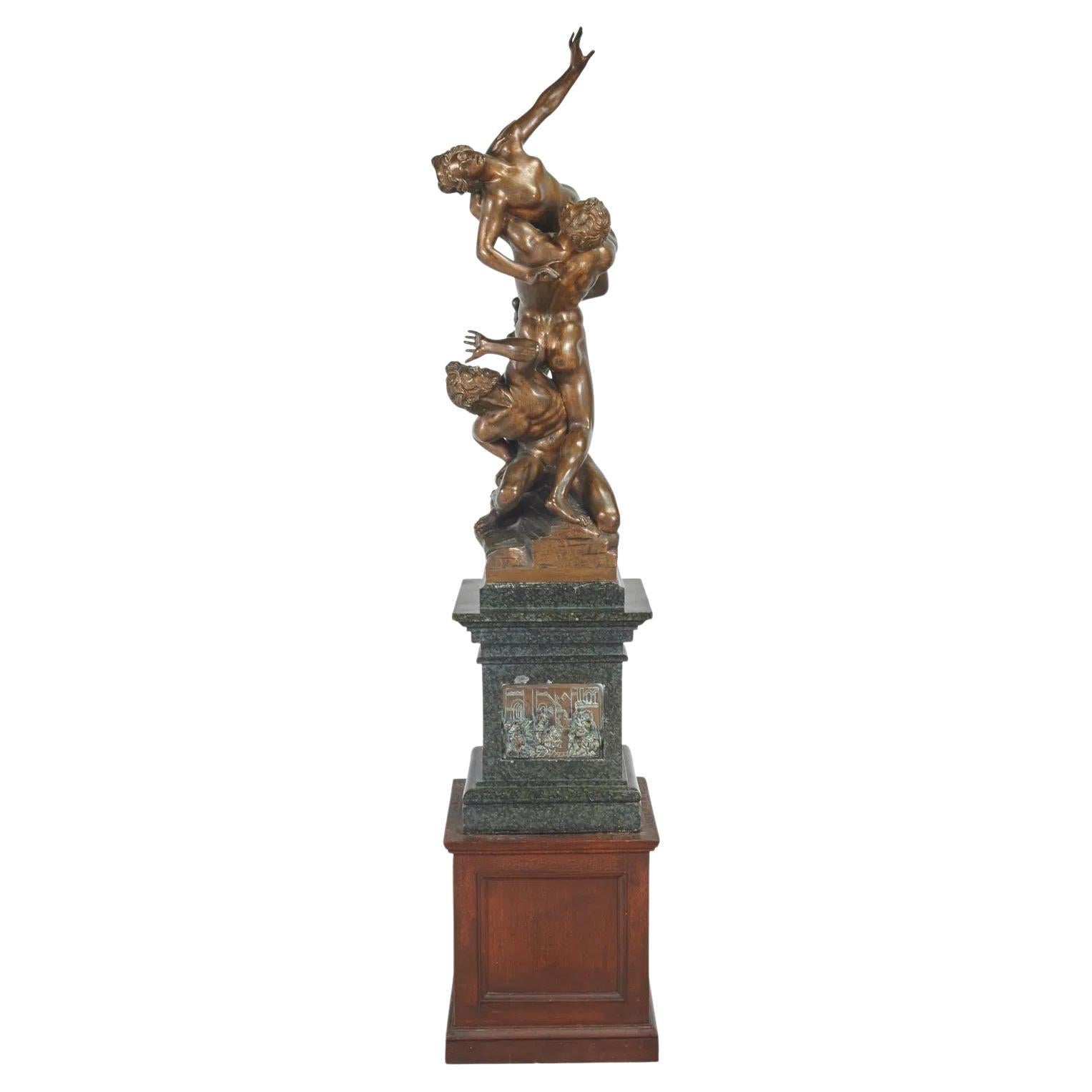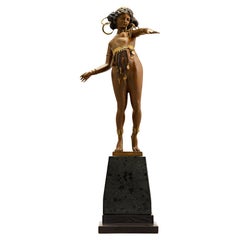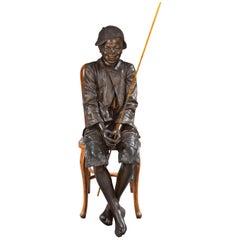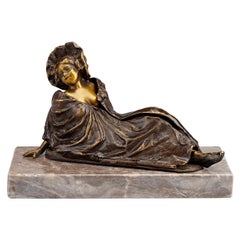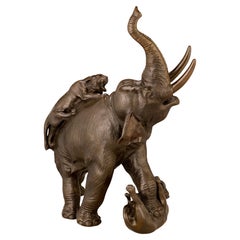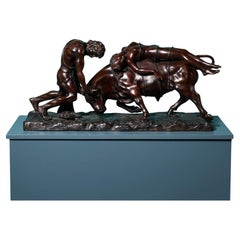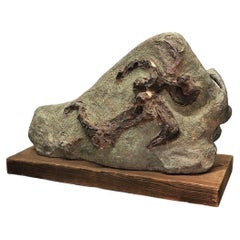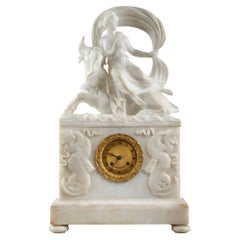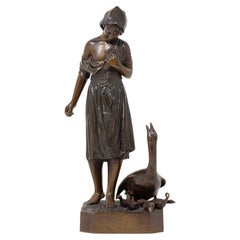Items Similar to Abduction of Europa by Hermann Haase-Ilsenburg
Want more images or videos?
Request additional images or videos from the seller
1 of 6
Abduction of Europa by Hermann Haase-Ilsenburg
About the Item
A poignant work of extraordinary artistry, this bronze figure captures the mythical tale of Europa, the beautiful Phoenician princess who was kidnapped by the king of the Olympian gods, Zeus. Among the most well-known stories from mythology and a favourite subject of artists in every medium, the story of Europa is beautifully translated here by sculptor Hermann Haase-Ilsenburg in the early Art Deco style.
Developing from the organic, natural forms of the Art Nouveau style that dominated the preceding decades, Haase-Ilsenburg’s work exemplifies the shift towards the symmetry and simplification of the more streamlined Art Deco. The overall graceful, clean lines of the piece mirror the ideals of the emergent style, while its relative simplicity makes it all the more emotionally compelling. The figures are delicately balanced, with Europa’s slumped figure mirroring the heavy, sloping horns of her steed. Haase-Ilsenburg flawlessly infuses a sense of humanity into his classical subject, all while merging the ancient myth with a new iconography.
Drawn from Greek mythology, the story of Europa is among the most enduring stories of Zeus’ numerous amorous pursuits. The daughter of a Phoenician king, Europa was renowned for her beauty, which eventually inspired the love of the Olympian god. Taking the form of a bull, Zeus kidnapped the young princess and carried her to the island of Crete, where she bore him three sons, including Minos, the future King of Crete. Europa eventually gave her name to the continent of Europe, and even today an image of Europa and the bull graces the Euro coin. Widely interpreted by artists for centuries, this myth comes to life in this exquisite bronze,
circa 1910.
Signed “HHaase” (on base).
Measures: 23 1/2" high x 17" wide x 8" deep.
- Creator:Hermann Haase-Ilsenburg (Sculptor)
- Dimensions:Height: 23.5 in (59.69 cm)Width: 17 in (43.18 cm)Depth: 8 in (20.32 cm)
- Style:Art Nouveau (In the Style Of)
- Materials and Techniques:
- Place of Origin:
- Period:
- Date of Manufacture:circa 1910
- Condition:
- Seller Location:New Orleans, LA
- Reference Number:Seller: 30-62431stDibs: LU89119989753
About the Seller
5.0
Recognized Seller
These prestigious sellers are industry leaders and represent the highest echelon for item quality and design.
Established in 1912
1stDibs seller since 2010
105 sales on 1stDibs
Typical response time: 10 hours
- ShippingRetrieving quote...Shipping from: New Orleans, LA
- Return Policy
Authenticity Guarantee
In the unlikely event there’s an issue with an item’s authenticity, contact us within 1 year for a full refund. DetailsMoney-Back Guarantee
If your item is not as described, is damaged in transit, or does not arrive, contact us within 7 days for a full refund. Details24-Hour Cancellation
You have a 24-hour grace period in which to reconsider your purchase, with no questions asked.Vetted Professional Sellers
Our world-class sellers must adhere to strict standards for service and quality, maintaining the integrity of our listings.Price-Match Guarantee
If you find that a seller listed the same item for a lower price elsewhere, we’ll match it.Trusted Global Delivery
Our best-in-class carrier network provides specialized shipping options worldwide, including custom delivery.More From This Seller
View AllNubian Dancer by Carl Kauba
By Carl Kauba
Located in New Orleans, LA
Exemplary of Art Nouveau elegance, the sensuous female form is the focus of this Viennese bronze by Austrian sculptor Carl Kauba (1865 - 1922). The intricately detailed bronze captures the supple form of an exotic Nubian dancer in a true representation of the era’s predominant aesthetic. Both classical and evocative, the nude figure is adorned by an array of bronze jewelry, including a stunning golden belt with chained pendants. Set upon a marble base, she is a stunning example of the erotic bronzes popular at the turn of the century.
Born in 1865 to a shoemaker, the Vienna-born Kauba became a well-known early 20th-century sculptor of Native Americans and other western figures. A pupil of Carl Waschmann and Stefan Schwartz in Austria, he studied at the Academy of Fine Arts in Vienna and traveled widely in the American West, sketching and modeling, after spending two years in Paris. He is also noted for his "Naughties" - a collection of mechanical push button sculptures...
Category
20th Century Art Nouveau Figurative Sculptures
Materials
Marble, Bronze
$12,850 / set
Boy Fishing Terracotta Statue by Goldscheider
Located in New Orleans, LA
This exceptional and monumental antique terracotta sculpture was crafted at Vienna’s renowned Goldscheider manufactory. This enchanting sculpture, model #1225, depicts a charming genre scene of a young boy...
Category
Antique 19th Century Austrian Art Nouveau Figurative Sculptures
Materials
Terracotta
Reclining Lady Erotic Bronze by Franz Bergmann
By Franz Bergmann
Located in New Orleans, LA
There is more to this enchanting Belle Époque figure than meets the eye. Crafted of bronze with cold-press enamel, this figure of a young woman lounging...
Category
Antique 19th Century Austrian Belle Époque Figurative Sculptures
Materials
Bronze
Japanese Bronze Elephant and Tigers by Genryusai Seiya
Located in New Orleans, LA
Bronze Elephant and Tigers Genryusai Seiya
19th century
This extraordinary bronze sculpture by Genryusai Seiya, a master of the Meiji period, depicts a breathtaking battle between a...
Category
Antique 19th Century Japanese Meiji Animal Sculptures
Materials
Bronze
Wedgwood Black Basalt Figure of Rousseau
By Wedgwood
Located in New Orleans, LA
One of history’s greatest thinkers, Jean-Jacques Rousseau, is the subject of this black basalt figure by Wedgwood. The individual features and personality of the celebrated philosoph...
Category
Antique 19th Century English Figurative Sculptures
Materials
Ceramic, Stoneware
Wedgwood Black Basalt Figure of Cupid
By Wedgwood
Located in New Orleans, LA
An important homage to love, this large black basalt figure is an impressive example of Wedgwood's artistry and imagination. Cupid, the ancient Roman god of love, is standing amongst billowing clouds with a pair of doves at his feet. Gazing towards earth with one hand shielding his eyes, the other hand holds an arrow. His bow and quiver rest at his side, ready to take aim. "CUPID" is etched into the base.
Considered a crowning achievement of Wedgwood, black basalt was created by blending manganese with an iron-oxide rich slurry procured from coal mines called carr. In addition to the impressive color, this combination also provided additional strength and solidity. While it initially proved challenging to fire because of its weight, that same characteristic was advantageous in creating ornaments, lending stability to library...
Category
Antique 19th Century English Figurative Sculptures
Materials
Ceramic, Stoneware
You May Also Like
Large Bronze Sculpture of Vincenzo Cinque’s Abduction of Europa
Located in Wormelow, Herefordshire
A large antique bronze sculpture depicting the Abduction of Europa attributed to Vincenzo Cinque.
The large scale and intriguing subject paired with its dark patination makes this a...
Category
Early 20th Century European Neoclassical Figurative Sculptures
Materials
Metal, Bronze
Stanley Stangren, Abduction of Europa, Modernist Terracotta Sculpture, ca. 1950
By Stanley R. Stangren
Located in New York, NY
Dimensions
Total height: 12.5 inches
Width: 19 inches
Depth: 7.5 inches
Base height: 1.5 inches
DETAILS Unsigned, original wood base.
CONDITION Excellent vintage condition, wear consistent with age and use.
Stanley R. Stangren (American, 1928–2014) was an outstanding American jeweler, artist, sculptor and ceramist, residing in New York City. He worked in different styles and in different materials, including oils, watercolor, ceramic and stone sculptures; and fine jewelry. Stangren’s painting styles varied tremendously – from complete abstract works to Holocaust themes in the style of Georges Rouault and Hieronymus Bosch to portraits in the style of Moses and Raphael Soyer. He was also a passionate lover of the performing arts, and, as a young man, spent time studying dance at both the School of American Ballet and with Martha Graham.
Although he worked with dance pioneers like Ms. Graham, Anna Sokolow and Charles Weidman, an injury prevented him from pursuing dance as a career. But he found other outlets for his artistic pursuits. In his youth, Stangrem attended the Brooklyn Museum School of Art, and graduated from the High School of Music and Art in New York City. He later studied at the Boston Museum of Fine Arts, the Art Students League, Bard Colledge and in Europe.
Stangren studied jewelry design in Europe, attending Staatlische Kunst Werkschule in Pforzheim, Germany and Kunstgewerbeschule der Stadt in Zurich, Switzerland. His jewelry and designs were received with great success. His combination of precious and semi-precious stones, high-karat gold and sterling silver, and exotic materials executed with outstanding workmanship in the abstract modernist style gave a unique aspect to his designs, the metalwork usually electroformed, cast, or fused in varying textures. After returning to New York in the later 1950’s, Stangren opened and maintained a ceramic business in Trenton, New Jersey.
Very few pieces of his work remain from this period. When he retired from the ceramics business, he spent much of his time enjoying the arts. He frequently attended Juilliard performances, including most of the opera and drama presentations at the School, and was especially fond of the dance concerts. The last 40 years of his life, he taught painting in the New York area and worked with Metropolitan Museum of Arts in developing annuities, for future acquisitions.
In addition, Stangren left annuities for MoMa in support of educational programs and left, in his will or through his executors, art supplies for the Harlem School of Art and benefits for the Urban Assembly organization. Mr. Stangren's love for the arts and for the performances he was seeing at Juilliard inspired him to take his participation a step further and to establish charitable gift annuities with the School. "I realized what Juilliard offered me, being a passionate music lover, and I decided to give something back" he said.
"What Juilliard achieves is remarkable. When I think of the prominent actors, dancers and musicians that have been educated there, I am always staggered. It is deeply financially satisfying to be able to give back to the School, while benefitting from it at the same time." The Juilliard School is not the only organization that Stanley Stangren...
Category
Vintage 1950s American Mid-Century Modern Abstract Sculptures
Materials
Terracotta
Alabaster Clock, "The abduction of Europa"
Located in Paris, FR
Rare alabaster clock representing "The abduction of Europa" by Zeus metamorphosed into a bull. Europa, dressed in an antique tunic revealing a breast, is ...
Category
Antique 1830s French Restauration Table Clocks and Desk Clocks
Materials
Alabaster, Bronze
Antique German Bronze Figure by Hermann Gladenbeck
Located in Newark, England
GIRL WITH GOSLINGS
From our Antique Bronze Sculptures collection, we are delighted to offer this German Bronze Figure by Hermann Gladenbeck. The Bronze beautifully cast with a dark...
Category
Antique Early 1900s German Art Nouveau Figurative Sculptures
Materials
Bronze
After Giambologna: The Abduction of a Sabine Woman
By Giambologna
Located in Montreal, QC
This fine 19th century copy of the famous group is in a sumptuous Serpentine marble. The Sabine man crouches in submissive pose, whilst the Roman carries off the writhing woman. It is well-presented on the original matching plinth and pedestal . This perhaps forms part of someone's Grand Tour along with mosaics and bronzes after the antique...
Category
Antique 1850s Italian Renaissance Figurative Sculptures
Materials
Marble, Serpentine
Bronze Statue of Abduction of the Sabine Woman After Giambologna
By Giambologna
Located in New York, NY
A fine casting of the Abduction of the Sabine Woman after Giambologna (1529-1608), mounted on marble pedestal with bronze relief of the same subject matter, placed on wooden pedestal...
Category
Antique Late 19th Century Figurative Sculptures
Materials
Bronze
Recently Viewed
View AllMore Ways To Browse
German Coins
Gold Mirror Art Nouveau
Europa Furniture Vintage
Ancient Coins
Art Nouveau Horn
Slopes Mirror
Art Nouveau Bronze Mirror
Princess Mirror
Greek Bull Coin
Vintage 1960s Nativity Set
Vintage Boho Plaster Elephant Tusks A Pair
Vintage Ceramic Bambi
Vintage Fairground Horse
Vintage Marwal Chalkware
Vintage Pink Flamingo Figurines
Vintage Rca Nipper
Virion Charles
Vistosi Pulcino
